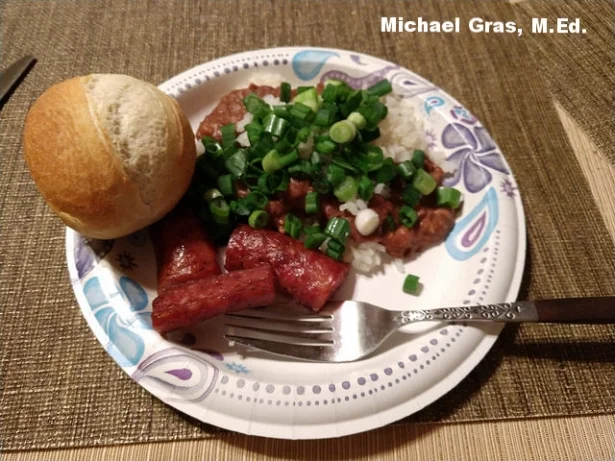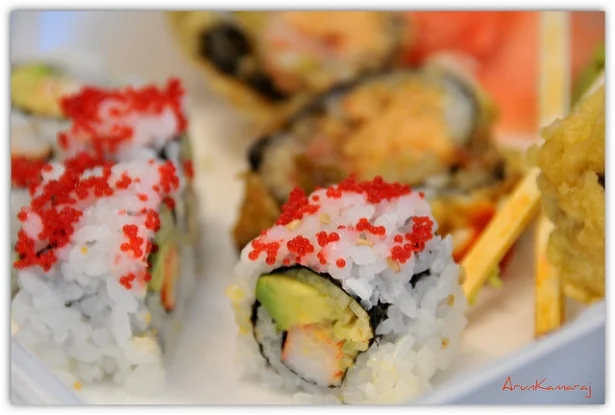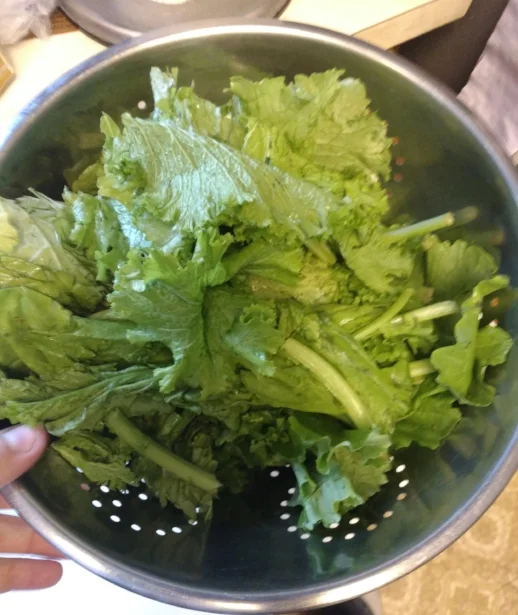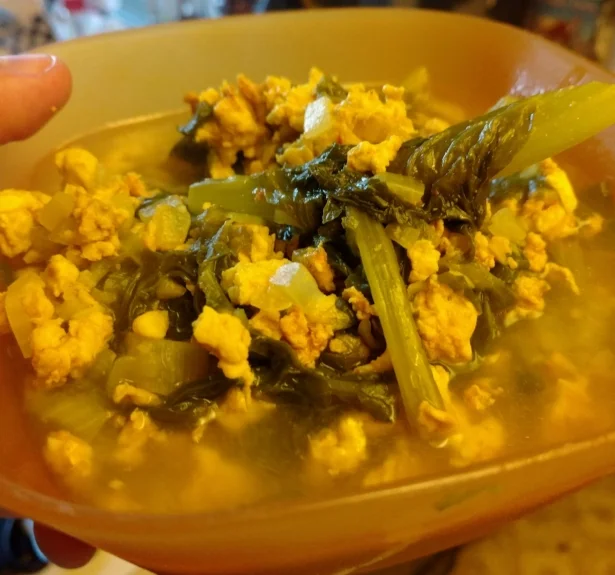KC 139 - "Yellow Mustard" Noodle Bowl w/ Chicken

Why Hello There, ni hao, swasdi-khap, and welcome to Kitchen Catastrophes, I’m your host with literally 1 minute of training in how to speak Thai, so I apologize for butchering that language. China, I also probably have to apologize to you, but I watched at least 6 minutes of Ni Hao Kai-lan, so I’m much more confident I was at least NEAR the correct phrasing. Today, we’re tackling a dish with three elements: a confusing in-joke, a designator that means almost nothing, and Chicken. So I hope you’re ready for some ‘splainin’, because here we go. (If you’re already ‘splained to, and just want the recipe, here’s a link. For everyone else, let’s dig in.)
I’m just Acting Out for Attention
I want to apologize right off for the pun I made as this dish’s name. There’s not actual Yellow Mustard, in the sense of like, French’s Hot Dog mustard, in this dish. So if you were looking to me to validate your hot dog ramen bowl idea…I was going to say “you’re out of luck”, but honestly, I think it could work. Let me get back to you on that.
Hot dog’s just pork, after all. Use a dijon mustard for a more wasabi-esque heat, get a ketchup based sauce like the Spaghetti Napolitan…This could be workable.
Anyway, the reason I named it “Yellow Mustard” is two-fold: firstly, the dish uses turmeric, the spice that gives Yellow mustard its flavor, as well as mustard greens, hence it’s a “Yellow” “Mustard” Bowl, so it’s a fun little in-side joke. Secondly, because the first name, “Thai Noodle Bowl” is STUPIDLY vague, and felt like a culinary stretch. Let me explain.
If you haven’t dealt with the phenomenon before, we need to start with the “noodle bowl”. See, the phrase “noodle bowl” is simultaneously very precise, and fairly useless as a designator, because it refers to a CLASS of foods. A noodle bowl is any recipe consisting of: noodles, sauce/broth, and…anything else. Meats, veggies, whatever toppings you want. Calling something a “Thai Noodle Bowl” is like labeling something a “Texas Salad” or a “Nigerian Sandwich”: It IMPLIES things, but it doesn’t actually SAY anything.
Sausage on rice with green onions…honestly pretty close to what I envisioned when I read “Texas Salad”.
There’s not technically a hard-and fast rule, but in general, what differentiates noodle bowls from straight up “soups” is that the noodles and toppings extend above the broth or sauce used. My Soba Steak Salad of a couple weeks ago could have been a noodle bowl if served in a bowl. This one is closer to a soup, having a quart of chicken broth in the recipe, and is, essentially, an exotic take on a chicken noodle soup. However, one ingredient in particular drew my attention, irritation, and recently chagrin.
In a Bit of a Pickle
That ingredient was Pickled Ginger.
Pictured presently: pink pickled ginger.
Pickled Ginger, as anyone who’s eaten sushi knows, is…exactly what it says on the tin. Ginger that has been pickled. It’s also often pink, which is a marketing thing. See, young ginger, when pickled, will take on a pinkish color…and it’s also the sweetest and most tender ginger. So people started adding a little bit of beet juice to make their ginger pinker so it looked a little more like the good shit, and eventually everyone’s ginger was unnaturally pink, and no one remembered why they were doing it. (I kid, of course. Japan takes METICULOUS notes on why it does shit, and repeats them verbatim when asked.)
And I used that place name deliberately. There are two different kinds of pickled ginger, technically, and they BOTH come from Japan. (The one I mentioned early, the thin slices of pink, sweet ginger served with sushi, is called gari. The other one is cut into strips, colored with more sour pickling liquid that’s a little more red in tone, and called beni shoga)
Zoomed in this close, it looks kinda like someone tried to make french fries out of beets.
So why the heck is Pickled Ginger showing up in my Thai Noodle bowls, huh? That’s clearly a reach. Just throwing random Asian ingredients into dishes willy-nilly, with no respect for cultural traditions. Do you think Thailand has pickled ginger in its cuisine, just because it’s ‘close to’ Japan? They’re 4,000 kilometers apart, you dick! That’s like saying NEW YORK is ‘pretty close’ to BOGOTA, COLOMBIA. I’m so mad, my ears are ringing! Oh, no wait, that’s my “rhetorical device phone”. Excuse me. as I walk to the other side of the room.
You’ve got Jon O’Guin.
Uh-huh.
Yes.
What?
I see.
Gross.
Okay, bye.
That was Me from the Past, which is why they used a land-line. He says I obliterated the knowledge I had ‘to protect all those who needed it’. Then he burped. Anyway, turns out, Thailand does use pickled ginger. Because, you know, even if they’re 4,000 km away from Japan, that’s still half the distance from Japan to California, and, you know, California Rolls exist.
Though they were invented in Canada, making my math a little wonky.
Yeah, while pickled ginger was “invented in Japan” (or, rather, Japan decided to NAME its pickled ginger, and uses them enough to draw notice. as China actually had Ginger a LONG time before Japan did, and pickled it among other uses), it turns out that other cultures in the area had it, liked it, and used it in stuff. Sure, Thai food doesn’t use a LOT of it, but there’s a couple recipes where it shows up. (Mostly as a topping, or, in one case, as an stuffing.)
So it turns out that I was the white guy over-simplifying Asian cultures this time. A stirring lesson about multiculturalism, and remembering that just because something is new to you, doesn’t mean its new to everyone, and a great way to eat up word count on a post about a relatively simple meal.
Oh, yeah, this this is really easy. It’s like, 7 ingredients, and a half-hour of work. The hardest part is simmering two pots at one time, and that only lasts like, 5 minutes! This is basically just exotic chicken noodle soup, that’s cheap, easy, pretty quick, and pretty good, all of which makes me think it’s a great dish to have on hand as fall starts pulling down the thermostat. SO LET’S DO THIS!
Watch out for Colorful Language
Now, this recipe is based on one from Food Network Magazine. I’m going to immediately alter it, so do whatever you want.
The foundation of the dish is real easy, and the same foundation of like, any soup. You start with aromatics. In western cooking, for a Chicken soup, you’d start with mirepoix, the combination of celery, carrot, and onion. Because we’re going for eastern flavors, you instead start with finely chopped ginger and red onion.
Frankly, a somewhat disturbing amount of red onion, in fact.
Cook those down in suitably exotic oil. Food Network said “Peanut Oil”, but I didn’t have any, so I used Sesame. You’re never really hot enough in the recipe for smoke points to matter, so, you know, go with what works. Sweat those suckers down for about five minutes or so, and then go straight to the main event. Drop in salt, sambal, turmeric, and ground chicken.
Turmeric, in case you haven’t tangled with it before, is a spice that comes in a mild variety of colors, from brilliant yellow (which is why it’s used in Yellow mustard, as noted earlier) to a bright goldenrod, to a more somber ochre hue, a color I only know because of D&D. You might remember it from my post about making Chicken Casserole Pie, where I added it in an attempt to alleviate some of my dad’s discomfort, a sentence that, full honesty, really hit me in the emotional gut as I wrote it, breaking my mental stride.
That’s not a joke. I legitimately upset myself with that line. Let’s try and get back to a happier place with a little…chicken soup for the soul?
Not my best work, but it’ll do.
Moving past that, on its own, turmeric tastes…weird. It smells like mustard and dirt, and tastes like weak pepper. It’s mostly used in mixture with other components: to color herbals teas, or mixed in with curry powder. Here, I think it’s just for the yellow, almost satay-like color it gives the chicken meat.
We’ve talked about Sambal briefly in the Vietnamese Chicken Salad post, and a little in the Ramen Burrito post, but a brief recap/reframing. There is a condiment that consists of chiles ground with salt and vinegar into a relatively thick red paste. It’s made by the same guys who make Sriracha, and you’ll find it in some Asian restaurants. This is sambal oelek, which is mostly just called “sambal” in America. This is kind of dumb, since sambal is just the word for “spice paste” in Indonesian, but then again, salsa is just Spanish for “sauce”, but I bet you pictured a mixture of tomatoes, onions, and peppers when I said it. There’s actually hundreds of varieties of sambal, but most places use oelek. I’ve personally used the same picture of it like, 3 times on the site so far.
Did I post this 4 times or only 3? Well, to tell you the truth, in all this excitement I kind of lost track myself. But being how this is Sambal Oelek, the most potent spice paste in the world and would blow your tastebuds off the roof of your mouth, you gotta ask yourself one question: Do I feel lucky? Well, do ya, punk?
There’s also garlic chili paste, which LOOKS almost identical, but has, well, garlic, and…you know what? We’ll talk about this more on Thursday, when we finally talk about Huy Fong foods. We don’t have time right now.
You stir your aromatics, spices, and chicken together, and cook the chicken through, another five minutes or so. Then, you soup that thing up! By literally making it soup. Add a quart of Chicken broth, a cup of water, and half a bunch of mustard greens, torn into pieces. Mustard greens are cousins to the collard greens we used a..holy shit, over a month ago? Nice! I forgot how much food I’ve made in the last little while. Anyway, they’re healthy, they taste pretty good, and they’re fun to tear up.
There’s a silly feeling of power to tearing up hearty green. Like, objectively, you know they’re not tough. But they FEEL tough as you rip them.
Toss them into your soup pot, and wait for them to wilt down into something manageable. Then, you just gotta bring the soup to a simmer, and wait…ANOTHER five minutes. Hey, at least the numbers are consistent.
Meanwhile, take your noodles and turn to your other pot of boiling water, getting ready to….what do you mean I didn’t tell you to boil another pot of water? Well…That’s not great. Do what I do in these instances: pour like, 2 quarts of water into a large skillet, and boil that. If you don’t need pasta water, this thinner method can boil noodles quicker. These noodles barely boil anyway: their instructions are literally “toss into boiling water, wait 4 minutes, drain”. They’d be even EASIER if they were the RIGHT NOODLES. See, this recipe calls for “Rice Vermicelli Noodles”, a noodle I was fairly sure meant “very thin, tangled noodles”, but then I saw this label
“Jantaboon” sounds like a planet in Star Wars where Luke got tanked on Red Milk and made some mistakes.
So I figured I was wrong, and got this. But I was NOT WRONG. There’s just a cultural difference in what is and is not vermicelli. So these noodles were a little more robust than the recipe intended, but they were perfectly fine to my family. (The funny thing is: the ‘right’ noodles get tossed in boiling water, removed from heat, and sit for 4 minutes. These ones just boil for 4 minutes, so they SOUND easier.)
Drain the noodles, cut them into bite-sized pieces (I aimed for like, 2.5” lengths), and now it’s time to assemble the noodle bowls. You toss some chopped pickled ginger (remember THAT ingredient? Man, been a while.) in the bottom of your bowls, toss a handful of noodles on top of it, and ladle in scoops of broth, chicken, and greens. You top with some reserved red onion, chopped peanuts, and parsley.
Which is DEFINITELY WHAT HAPPENED. IGNORE THE LACK OF RED ONION.
It’s very warm and comforting. To me, the first batch was a little weird, as I constantly felt that it needed something more…but what I felt it needed CHANGED as I ate it. Like, I’d want it to be a little saltier, and then I’d hit a saltier bit, which I’d want spicier, and then I’d want the next section sweeter…It was a wild experience. Even just the broth was weird, since it didn’t have the same kind of aromatics, so it was a different, “cleaner” chicken flavor, compared to the slightly thicker, more ‘homey’ western chicken soup broth.
We reheated the left-overs and finished off the entire batch later in the week, and I doctored my bowl with a bit of sriracha and Thai sweet chili sauce, and honestly that bowl was quietly kind of perfect. Like, I didn’t think of adding anything to it, I just ate the whole thing. So I highly recommend this recipe if you’ve got some time, and want a pretty cheap meal for 4.
As ever, our site can only do what it does thanks to the lovely support of our Patrons, who, with simple donations of as little as $1 a month, let us keep the site ad-free, and cover the technical costs of running the site. Of course, we’re also hugely grateful (which simultaneously does and does not sound grammatically correct) to our supporters and community on social media, who share our posts, letting more people read such humor as “Jon answers a fictional phone to talk to himself.”. Mostly, they help by giving Jon a sense of self-worth as the number of people who like our Facebook page stays relatively constant.
THURSDAY: I TOLD YOU WE WERE GOING BACK TO THE FAIR. THAT WAS FALSE. WE’RE GOING TO CALIFORNIA AND VIETNAM, AND TALKING ABOUT A HOT SAUCE COMPANY.
MONDAY: JON’S BASEMENT HAS GOTTEN COLD WITH THE ONSET OF OCTOBER, SO HE’S JUST GOING TO CHURN OUT THE WARMING, SPICY FOODS. LET’S HIT A DISH I’VE BEEN REFERENCING FOR YEARS: SHAKSHUKA
Recipe
Yellow Mustard Noodle Bowls with Chicken
Serves 4-5
Ingredients
1 tbsp roasted peanut oil/ roasted sesame oil
2 tbsps finely chopped peeled fresh ginger
1 large red onion, finely diced
1 lb ground chicken
2 tsps ground turmeric
2 tsps sambal oelek or chili garlic sauce
Kosher salt
4 cups low-sodium chicken broth
1/2 bunch mustard greens, leaves torn
6 oz rice vermicelli noodles
1/4 cup finely chopped pickled ginger
Chopped salted peanuts & fresh parsley/cilantro, for topping
Preparation
1. Heat the peanut oil in a large pot or Dutch oven over medium-high heat. Start another pot of water for the noodles (or wait until later, and kind of hate yourself as you boil it then) over high. Toss the chopped ginger and all but 1/4 cup of the onion in the first pan and cook, stirring occasionally, about 5 minutes, until onion is tender. Add the ground chicken, turmeric, chili-garlic sauce and 1 tsp salt. Cook, breaking up the meat, until cooked through, about 5 minutes.
2. Add 1 cup water, broth and mustard greens (This will look like too much until the greens wilt down). Bring to a boil, then reduce to a simmer and cook until the broth has reduced slightly and the greens are tender, about 5 minutes. Season with salt.
3. Add noodles to (hopefully) boiling pot, and cook to package instructions. Drain, and run under cold water. Cut the noodles into bite-sized (2-3”) lengths, using kitchen shears for ease.
4. Place a portion of pickled ginger into each bowl, add noodles, then chicken-broth mixture. Top with peanuts, parsley/cilantro and the remaining chopped red onion; season to taste.
















